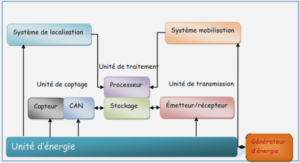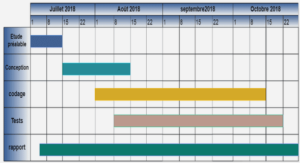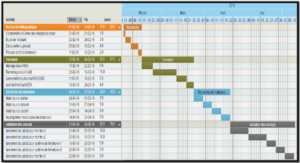The concept of ‘healthy’ or successful’ aging
This thesis refers to ‘healthy aging’ or ‘successful aging’ as multidimensional concepts which aim to characterize human health during aging as a whole. Such concepts have become popular objects of research in the last years (Bülow and Söderqvist 2014; Cosco et al. 2014a); however, there is currently no consensus on how exactly ‘healthy’ or ‘successful’ aging should be defined (Bülow and Söderqvist 2014; Cosco et al. 2014a; Martinson and Berridge 2015).
A Terminology issues
Different terms are currently used to describe the above-described multidimensional concepts. The term that was proposed originally, “successful aging”, has been criticised for having aState of knowledge discriminatory connotation, because the concept that is generally considered the opposite of
success is “failure” (Bülow and Söderqvist 2014). Thus, a separation of elderly individuals into those who age ‘successfully’ – and those who do not – can be perceived as degrading for the ‘unsuccessful’ group (Bülow and Söderqvist 2014; Martinson and Berridge 2015; Scheidt R.J. et al. 1999).
In response to this criticism, a large number of alternative names has been proposed, including “successful aging”, “healthy aging”, “active aging”, “active and healthy aging”, “robust aging”, “productive aging”, “effective aging”, “positive aging”, “optimal aging”, and “aging well” (Bousquet et al. 2015a; Bülow and Söderqvist 2014; Depp and Jeste 2006; Katz andCalasanti 2014).
For the work included in this thesis, we have chosen to adapt the term “ healthy aging” in order to avoid possible discriminatory connotations. Thus, this term is preferentially used throughout this thesis manuscript, except in the “State of knowledge”- section that describes the historical development of the concept, criticisms made concerning the most popular version of the concept, and a description of the heterogeneity of available definitions. In this section, many references to “successful aging” are made, since this is the term was proposedoriginally, and is still used by many authors.
Historical overview
Figure 1 presents a timeline that illustrates some key aspects of the historical development of multidimensional concepts of successful aging or healthy aging.
Rowe and Kahn’s model of successful aging
The scientific work that has led to a large dissemination of the ‘healthy’/ ‘successful’ aging – concept, and that established it as a key theoretical framework in geriatric research, was the set-up of the McArthur Foundation Study on Successful Aging (Bülow and Söderqvist 2014). In 1987, the principal investigator of the study, Robert W. Rowe, and his colleague Robert L. Kahn published an article titled “Human Aging: Usual and Successful” in the high-ranking generalist journal Science (Rowe and Kahn 1987).
As highlighted by Bülow et al., the ideas published in this article should be seen, amongst others, as a reaction to rising criticisms with respect to “ disengagement theory” (Cumming and Henry 1961), which had been a key concept used in geriatric res earch (Bülow and Söderqvist 2014). While disengagement theory postulated that “ aging naturally and inevitably entailed a gradual withdrawal from society and social relations” (Bülow and Söderqvist 2014), Rowe and Kahn’s publication underlined that age-related decline should not too readily accepted as fate, stating that too much emphasis had been put on the “role of aging per se” when trying toexplain health-decline during life.
Rowe and Kahn underlined the existence of “substantial heterogeneity within age groups” with respect to health status, which even appeared “to increase with increasing age ”. In this context, they insisted on the possibility of prevention, while highlighting that lifestyle factors such as diet and psychosocial factors made up a large part of the causal explanation for health deterioration during aging. Their hypothesis that ‘successful aging’ was indeed possible was derived from observations that within groups of elderly people, individuals exist ed that showed “minimal physiologic loss”.
Ten years later, in 1997, Rowe and Kahn published another article in which they further developed their idea of ‘successful aging’ (Rowe and Kahn 1997). It was in this article that they highlighted the multidimensional nature of their successful aging- construct, and defined its different dimensions: “avoidance of disease and disability”, “maintenance of high physical and cognitive function”, and “sustained engagement in social and productive activities”.
Other early concepts
In 1961, Havighurst proposed a concept of successful aging that can be regarded as a multidimensional model of happiness and satisfaction with life: “A theory of successful aging is a statement of the conditions of individual and social life under which the individual person gets a maximum of satisfaction and happiness and society maintains an appropriate balance among satisfactions for the various groups which make it up”. (Havighurst 1961)
The proposed components of happiness and satisfaction with life were “zest”, “resolution and fortitude”, “goodness of fit between desired and achieved goals”, “positive self-concept”, and a happy and optimistic “mood tone”. Rowe and Kahn’s model can be considered as very different from this framework, as it does not include any explicit notion of happiness and satisfaction with life. Rowe and Kahn’s concept is also quite different from an early framework of successful aging developed within the Kansas City Study of Adult Life (Williams and Wirths 1965), which includes “the amount of activity in which the indivi dual engages, his ability to disengage, his satisfaction with life, and the maturity or integration of his personality ” as well as being persistently autonomous, with autonomy defined as giving at least the same amount of “ input” or “energy” to others as received.
On the other hand, Rowe and Kahn’s model is rather similar to two to other earlier concepts, proposed in 1974 by deCarlo (“able to carry on daily routine and absence from more than mild illness which would not impair one’s daily routine” as well as good cognitive and mental health) (DeCarlo 1974), and in 1979 by Palmore (surviving to 75 years of age, good physical function/ low disability, and happiness) (Palmore 1979).
An important psychological model published in 1989, thus shortly after Rowe and Kahn’s first article, is the “Selection, Optimization, and Compensation (SOC)”- model developed by Paul B. Baltes and Margret M. Baltes (Baltes and Baltes 1989). This model postulates that successful aging involves “efforts at maintaining and achieving high levels of functioning by pro moting an adequate level of general reserve capacity” (optimization), “reduction in the number of high-efficacy domains” (selection), and “compensatory skills and activities that become necessary when the required behavioural skills, capacities, and resources are no longer available” (compensation). This model is quite different from Rowe and Kahn’s approach, since adaptive efforts of aging individuals are stressed, rather than external factors , and since it does not include the notion of avoiding disease.
Dichotomous nature of the construct
The dichotomous nature of Rowe and Kahn’s successful aging concept has notably been criticised by Cosco (Cosco et al. 2014b) and Schulz (Schulz and Heckhausen 1996). Schulz and Heckhausen underlined that a binary vision of successful aging prevented researchers from considering the “large heterogeneity within the normal category”, that is, the variety of health states among ‘usual agers’. (Martinson and Berridge 2015)
Problematic basic philosophy
Martinson and Berridge also identified publications that fundamentally challenged the relevance of Rowe and Kahn’s successful aging- concept for various different reasons. One major reason was the lack of consideration of socioeconomic and political factors , such as social injustice, as important determinants of successful aging (i.e. an overestimation of the capability of individuals to be in control of their own fate by adopting a healthy lifestyle). (Martinson and Berridge 2015)
This point was notably stressed by Rubinstein (Rubinstein and deMedeiros 2015). According to them, Rowe and Kahn’s model showed an exaggerated focus on the possibilities of theindividual to change its fate, which revealed a spirit of neoliberalism and “Western possessiveindividualism”. For the authors, an immense problem of Rowe and Kahn’s concept is thatexternal factors related to the socioeconomic and political environment, such as social inequalities, are not accounted for.
Another important aspect revealed by Martinson and Berridge was that the exclusiveness of the concept, related to its binary approach, which leads to labelling the presence of disab ility as ‘non-successful’ aging. Since this can be perceived as discriminatory and judgemental, suggestions were made to create concepts that avoid creating groups of individuals that, by definition, do no longer have the chance to “age successfully” because they have disability or chronic illness. One example is a model of “resilient aging” which represents, according to the authors, a more inclusive concept as resilience was “ attainable by all older adults”. (Martinson and Berridge 2015) Moreover, Rowe and Kahn’s objective to mark a clear depart from disengagement theory has led to the fact that the reality of death, and thus the inevitability of health decline at some State of knowledge point is missing from their concept. This has notably been criticised by Cosco (Cosco et al. 2013a) and by Lamb (Lamb 2014).
Lacking life-course perspective
A final critically viewed aspect of Rowe and Kahn’s model is the fact that it does notexplicitly take a life-course perspective. Stowe et al. stated that it thus failed “to capture developmental processes and trajectories of continuity and change in function over time” (Stowe and Cooney 2015). Further advocates for integrating a life-course perspective into concepts of successful or healthy aging are Pruchno (Pruchno and Wilson-Genderson 2014), Kuh (Kuh 2007), and Schulz (Schulz and Heckhausen 1996).
Reaction of Rowe and Kahn to these criticisms
Rowe and Kahn have, in part, reacted to these different elements of criticism in an article published in 2015: “Successful Aging 2.0: Conceptual Expansions for the 21st Century”.They clarify that in their view, models with a psychological focus that adopt life-course perspectives – such as the SOC- model developed by Baltes and Baltes (Baltes and Baltes 1989) indicated the “how” of successful aging, while Rowe and Kahn’s model indicated the “what”. They also underline that their concept did not view the opposite of “successful aging” as “unsuccessful aging”, but as “usual aging”, stating that the terminology that was used during early phases of the development of their concept was “ usual aging” versus “better than usual aging”. With respect to criticisms stating that their model was “too biomedical”, they pointed out that there were other voices that suggested focusing more – and not less – on aspects such as “biomarkers and genetics” as factors with a role for healthy aging (Silverstein 2015).
A theme of criticism that appears to be of great importance to Rowe and Kahn is the lack of consideration of social, societal, and political factors in their initial successful aging model. Alarge part of their 2015- article is dedicated to this issue, underlining that they do consider these factors to be of major importance, and have thus, in 2007, assembled a researc h network dedicated, amongst others, to “recommend specific policies to facilitate emergence of a successfully aging society”. This research network developed several important aspects of successful aging “at the society level”: “productivity and engagement”, “cohesion, including the degree of synergy or tension between generations and socioeconomic strata ”, “balance in dealing with the risks and benefits of demographic change”, “resilience”, and “sustainability” (Rowe 2010). Moreover, Rowe and Kahn make three suggestions for research perspectives aimed at developing a successful aging concept that includes societal aspects: “re-engineering core societal institutions”, “adopting a life-course perspective”, and “focusing on human capital”. Research on societal institutions should cover aspects such as the identification of “institutional or structural obstacles to successful aging”. In Rowe and Kahn’s view, the adoption of a life-course perspective should include discussions on how different life tasks (raising children, professional activities, etc.) could be better distributed across lifespan. “Focusing on human capital” makes reference to using the talent of older individuals. Rowe and Kahn also note that calls for completely abandoning their successful aging concept in response to the numerous criticisms were the “ minority”, and refer to Stowe and Cooney who suggested that the immense popularity and the large use of the concept in scientificresearch warranted “modification over disposal” (Stowe and Cooney 2015).
The heterogeneity of available definitions
Heterogeneity with respect to the included criteria
Description of the broad range of applied criteria
In 2006, Depp and Jeste conducted a comprehensive review of the literature in which they considered “published English-language peer-reviewed reports of data-based studies” on adults older than 60 years, which contained operationalized concepts of successful aging, and which “examined successful aging as a dependent variable” (Depp and Jeste 2006). They retrieved 28 studies that included 29 different successful aging- definitions. The authors concluded that there was a large heterogeneity among the retrieved definitions, but that most concepts included the notion of “absence of disability” or good “physical performance”, and (although to a lesser degree), the “absence of cognitive impairment”. The most recent systematic review of the literature was publish by Cosco et al. in 2014 (Cosco et al. 2014a), and included original, peer-reviewed scientific articles that contained an operational definition of successful aging, which was not a “single-item self-report” measure of successful aging, and which did not use “previously identified operational definitions”. A total of 84 studies met these criteria – and as some studies reported multiple definitions, a total of 105 different definitions were identified. A large majority (over 90%) of the definitions contained factors related to physiological health (such as “ physical functioning”), and almost 50% contained elements related to engagement with li fe. Factors related to “wellbeing” were also found in almost 50% of definitions, and more than a quarter of operationalized definitions contained aspects related to “ personal resources”, such as resilience. Only a small fraction (about 5%) included extern al factors such as an individual’s financial situation. Three of the 84 studies also included self-rated successful aging as part ofa multidimensional model.
Figure 3 illustrates the general groups of healthy/ successful aging- components identified by Cosco et al. (Cosco et al. 2014a), as well as the more concrete criteria with which the components were operationalized. In addition, a number of concrete criteria that were not explicitly mentioned in Cosco’s review (mostly because the respective studies had not yet been published, or because they did not provide data-based operationalized definitions, but rather suggestions for definitions) are listed. The main categories of healthy/ successful aging- criteria identified by Cosco et al. (“physiological” criteria, “well-being”, “engagement”, “personal resources”, and “extrinsic factors”) are represented as central dark blue ellipses in the Figure. In addition, these main categories are discussed in the manuscript text below the Figure.
The WHO’s “active aging”- framework
Core definition
The concept of “active ageing” proposed by the WHO in 2002 (World Health Organization 2002) should not be understood as a health outcome, but rather as a continuous process: “Active ageing is the process of optimizing opportunities for health, participation, and security in order to enhance quality of life as people age”.
Specifications
This process should permit individuals to “realize their potential for physical, social, andmental well being throughout the life course” and also assure “adequate protection, security and care”. It is underlined that ‘activity’ does not only refer to physical exercise, or to professional activity, but to involvement in a large number of different domains (“social, economic, cultural, spiritual, and civic affairs”). In line with above-mentioned voices that insist on the development of inclusive concepts of healthy aging, the WHO’s concept explicitly “aims to extend healthy life expectancy and quality of life for all people as they age, including those who are frail, disabled and in need of care”. (World Health Organization 2002).
The ‘whole diet’- approach
In response to the above-mentioned limitations of the traditionally applied approach to focus on specific dietary factors such as nutrients, foods, and food groups, an alternative approach has been developed in nutritional epidemiology: the ‘whole diet’ – or ‘overall diet’- approach, which has also been named “dietary pattern analysis” (Hu 2002). In nutritional epidemiology, historically, two main types of methodologies have been developed in order to consider the diet of an individual as a whole. The first method involves the construction of scores or indices based on existing knowledge and/or hypothesis. This method is also referred to as “ a priori” dietary pattern analysis. The second method involves the extraction of dietary patterns by empirical, data -based methods such as principal component analysis or cluster analysis, and is also referred to as “ a posteriori” dietary pattern analysis. (Andreeva and Kesse-Guyot 2015; Hu 2002; Kant 2004) With the application of reduced rank regression to nutritional epidemiology, a method has been introduced that can be seen as a hybrid method (i.e. a method sharing both elements of the a priori- and the a posteriori- approach), as this method is essentially data -driven, but alsorequires reflection on specific mechanistic hypotheses by which diet may affect health outcomes (Andreeva and Kesse-Guyot 2015; Hoffmann et al. 2004).
A priori dietary scores
A large variety of different a priori – dietary scores has been developed to this day (Andreeva and Kesse-Guyot 2015; Kant 2004; Kourlaba and Panagiotakos 2009; Waijers et al. 2007; Wirt and Collins 2009). Many of these scores have been designed to measure adherence to national nutritional guidelines, such as the Healthy Eating Index (HEI), and its updated version, the HEI-2010 (Guenther et al. 2013; Kennedy et al. 1995), the Alternate Healthy Eating Index (AHEI) (McCullough et al. 2002) and its updated version, the AHEI-10 (Chiuve et al. 2012), the Dietary Guidelines for Americans Index (DGAI) (Fogli-Cawley et al. 2006), the Healthy Eating Index for Australians (Roy et al. 2015) and its modified version, the Total Diet Score (TDS), or the French Programme National Nutrition Santé- Guideline Score (PNNS-GS) (Estaquio et al. 2009). Other scores reflect adherence to specific forms of diet such as the Mediterranean diet (Buckland et al. 2010; Patterson et al. 1994; Rumawas et al. 2009; Sofi et al. 2014; Trichopoulou et al. 2003), measure dietary diversity (Drescher et al. 2007; Drewnowski et al. 1997; Kant et al. 1991; Krebs-Smith et al. 1987), or the adequacy of the diet to nutrient reference values (Krebs-Smith et al. 1987; Verger et al. 2012). Moreover, particular scores have been developed to reflect a diet that is hypothesized to be beneficial concerning specific health outcomes, such as cardiovascular health (Appel et al. 1997) or cognitive health (Morris et al. 2015), based on available evidence and hypotheses.
Finally, a number of scores have been designed to generally reflect a type of diet that is thought to be beneficial for overall health, such as the AHEI (McCullough et al. 2002) or the Dietary Quality Index- International (DQI-I) (Kim et al. 2003).
A posteriori dietary patterns
A posteriori dietary patterns have the advantage that they can reveal new interesting aspects, since their construction is data-based, and not dependent on the existing state of knowledge and specific hypotheses (Hu 2002). On the other hand, subjective decisions have to be made in the phase of food group- construction, which precedes the application of data-reduction methods (Andreeva and Kesse-Guyot 2015; Newby and Tucker 2004). Further subjective decisions concern potential transformations of the dietary “input” variables (i.e. the food groups), andthe number of dietary patterns to retain (Newby and Tucker 2004).
Two frequently applied data-reduction methods are principal component analysis (or more generally factor analysis) and cluster analysis (Newby and Tucker 2004). In the case of principal component analysis, the aim is to “construct linear combinations of food intakes, which explain a high proportion of the variation in food intakes” (Wirfalt et al. 2013). Cluster analysis, on the other hand, “aggregates individuals into relatively homogeneous subgroups (clusters)with similar diets” (Hu 2002).
While a priori dietary scores mostly serve to confirm specific hypotheses (for example on the relevance of national dietary guidelines for disease prevention), a posteriori dietary patterns rather serve exploratory purposes (Andreeva and Kesse-Guyot 2015). A disadvantage of a posteriori dietary patterns is that the extracted patterns are specific to the investigatedpopulation, and may be difficult to reproduce in other study samples (Jacques and Tucker 2001; Schulze et al. 2003). Schulze et al. have developed a more robust methodological approach that consists of computing “simplified pattern variables” that can be better applied to study samples other than the sample that served for the extraction of the dietary pattern scores (Schulze et al. 2003). These simplified patterns are obtained by calculating the sum of those “unweighted standardised food variables” that were highly correlated with a specific pattern (Schulze et al. 2003). Usual dietary pattern scores are a linear combination of all initial food variables (and the different food variables have different ‘weights’ according to the magnitude of their correlation with the dietary pattern).
Two frequently identified dietary patterns are ‘healthy’ dietary patterns characterized by a high consumption of “plants foods”, “fish and seafood”, “vegetable oils” and “low -fat dairy products” on the one hand, and ‘Western’ dietary patterns characterized by a high consumption of “food products low in essential nutrients and high in energy”, and “red and processed meats”. (Wirfalt et al. 2013)
|
Table des matières
PREAMBLE
PUBLICATIONS AND COMMUNICATIONS
I. Original scientific articles
I.A Articles that are part of this thesis
I.B Articles that are not directly part of this thesis
II. Communications at scientific conferences
II A 1. Oral communications
II A 2. Poster communications
STATE OF KNOWLEDGE
I. Population aging as a challenge for modern societies
I.A Worldwide demographic changes
I.B Increases in the burden of non-communicable diseases and disability
I.C Dementia as a particular age-related public health problem
II. The concept of ‘healthy’ or successful’ aging
II.A Terminology issues
II.B Historical overview
II.C Criticisms of Rowe and Kahn’s concept
II.D The heterogeneity of available definitions
II.E Attempts to create consensus definitions
II.F Concepts developed by the WHO
III. Nutritional epidemiology
III.A Assessment of dietary consumption
III.B Investigation of specific dietary factors
III.C The ‘whole diet’- approach
IV. Diet and healthy aging
IV.A Diet in relation with multidimensional healthy aging concepts
IV.B Nutritional components associated with healthy aging criteria
OBJECTIVES
GENERAL METHODOLOGY
I. The SU.VI.MAX and SU.VI.MAX 2 studies
I A. The SU.VI.MAX study
I B. The SU.VI.MAX 2 study
II. Development of an operational definition of healthy aging
II.A General rationale
II.B Presentation of the chosen criteria and cut-offs
II.C Descriptive data concerning the chosen healthy aging definition
III. Statistical analyses
III.A Multivariable analyses: types of statistical models and adjustment
III.B Inverse probability weighting
PUBLICATIONS
I. Publication 1: Antioxidant supplementation and healthy aging
II. Publication 2: A posteriori dietary patterns and healthy aging
III. Publication 3: A priori dietary scores and healthy aging
IV. Publication 4: Plasma vitamin D and later cognitive functioning
DISCUSSION
I. Critical discussion of the main findings of this thesis
I.A Objective 1
I.B Objective 2
I.C Objective 3
II. Synthetic discussion of the findings in the context of potential mechanistic pathways
II.A Oxidative stress, xenohormesis, and genomic instability
II.B The “inflammaging” concept
II.C Epigenetic changes and caloric restriction
II.D Changes in gut microbiota
II.E Metabolic disorders and vascular health
II.F Autophagy of damaged and misfolded proteins
II.G Telomere shortening
III. Methodological considerations
III.A General methodological aspects related to nutritional epidemiology
III.B Confounding bias and adjustment
III.C Generalizability
III.D Selection bias and inverse probability weighting
III.E Aspects related to the chosen healthy aging definition
III.F Statistical analyses
III.G Aspects concerning our analyses on antioxidant supplementation and on vitamin D
IV. Perspectives for future research
IV.A Development of a healthy aging definition for the NutriNet-Santé study
IV.B Adherence to the Mediterranean diet and healthy aging
IV.C Anthropometric indicators, metabolic disorders, and healthy aging
V. Final conclusion
REFERENCES
APPENDICES
I. Appendix 1: Methodological article on the NutriNet-Santé cognitive test battery
II. Appendix 2: Adherence to the Mediterranean diet and healthy aging
III. Appendix 3: Supervision of interns
IV. Appendix 4: Scientific collaborations
V. Appendix 5: Summary (in English & French)






